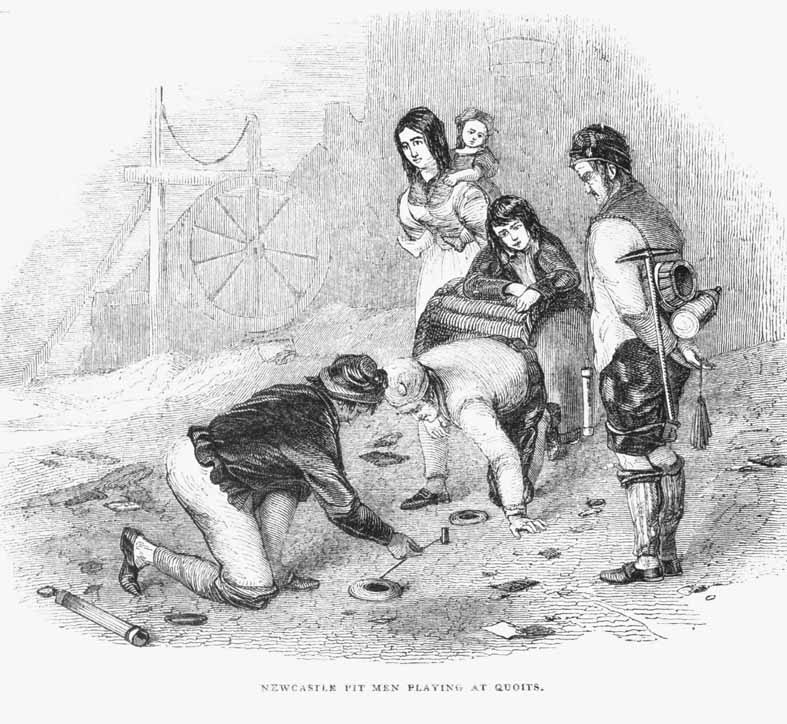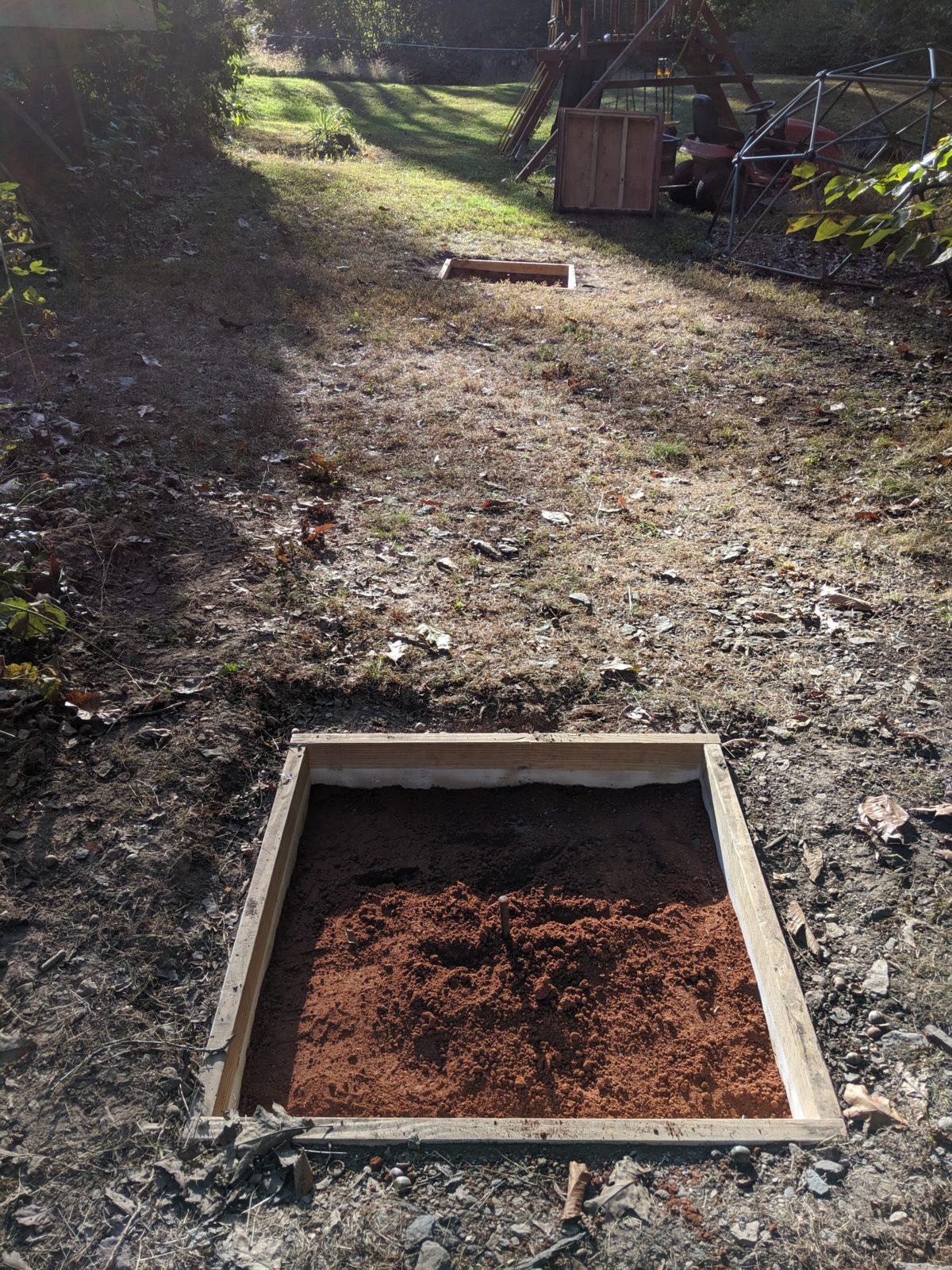I can’t remember too many summer time outings as a kid where the game of Quoits wasn’t nearby. It was such a naturally expected feature of any outdoor event that I found it shocking when no one seemed to even know the game when I moved to the Philadelphia area. I love to play the game and it was one of the first things I setup as soon as I moved into my current house.

What is Quoits?
Many of my local friends have never played the quoits before I rope them into playing, but just about everyone has played something similar. The basic gist of the game is that you are throwing a round disc with a hole in the middle and trying to get it to land on (or as close as possible) to a metal peg in the ground.
A friend of mine from Kentucky and a handful of others that grew up around Pennsylvania Dutch areas were already familiar with quoits. I always thought of quoits as a “PA Dutch” thing. I’ve seen and purchased sets in places traditionally known for large Mennonite populations. I was definitely surprised when I learned that historically it had been a predominantly English game.
Wikipedia describes several different varieties of quoits, but in my mind the only real version is the Traditional American 4 lb. If you’re not throwing a piece of heavy metal at another piece of metal, I’m not interested. I’ve played some of the others, but nothing compares to the variant that I played all my life. For this game, you need proper pits that are more or less a permanent fixture wherever you want to play.
The Pitch
So I hear you… a bunch of people hanging around with beers in one hand and throwing 4 lb metal discs at pins stuck in the ground doesn’t sound like something you want in the same backyard that your kids and their friends play in. I didn’t either, so that became a prime motivator for me in this project. What made this problem even worse is that I wanted the ability to keep the game going until after the sun went down. This meant that the pit location had to get closer to the house or I had to run supplemental lighting.
I opted to go closer to the house since I already have some pretty powerful flood lights in a more or less perfect spot. This also solved some other minor concerns of mine like the ability to be in close earshot of my outdoor speakers and having more options for putting your beverage of choice down to rest while you’re throwing. I also built a spot under my deck for storing the quoits in between games. Speaking of this deck, it also offers a great spot for spectators for when the quoit matches get interesting.
This really underscored the need for a good solution to my number one concern. Anyone who’s tripped over one at night can tell you all about the dangers of open pits and exposed pins. Plus who wants to mow grass around either of them?

Recessed Covered Pits
I found a design for constructing recessed covered pits and decided to give it a try. The design pretty much met all of my requirements, and it looked like a fun little project as well. Unfortunately, the site that held these original plans no longer exists. The basic structure consisted of a 36 inch inside square made from 2 x 6s, topped with a sheet of ply wood mounted on a square made from 2 x 4s that is just under 36 inches outside with two reinforcing pieces to prevent the plywood from sagging. I used wood meant for the outdoors, but also painted each box for added protection and a more interesting look.

The most difficult part of this project was digging the holes in my shale filled front yard to put the pit boxes in! After getting the boxes in place, I filled each with about 9 yards of baseball infield clay to get the hob at regulation height. Overall I ended up with a great set of recessed quoit pits that keeps the clay pristine and I can drive my lawn mower right over top!


Leave a Reply